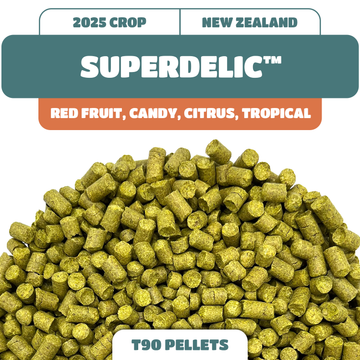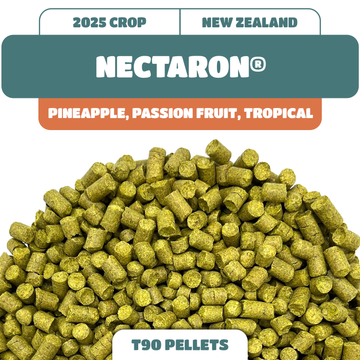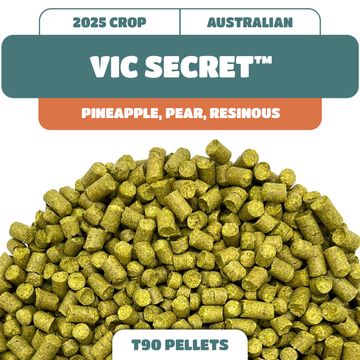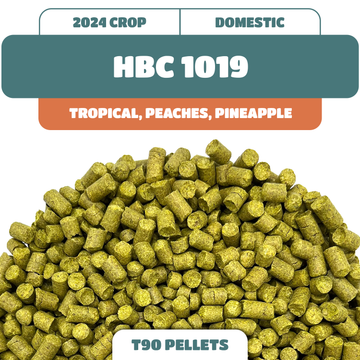When are hops ready to harvest?
Depending on the specific growing zone, most hops are usually ready to pick by late August or early September.
To test a cone's readiness, select a random cone and cut it vertically. In the center, a ripe cone will have yellow dust, known as lupulin. The cone will also emit a pungently hoppy smell. Another way to tell is to snap a hop cone in half. If it breaks as a carrot would, your crop is ready to harvest. If it is still spongy, then these cones are not ripe. Not all cones will be ready simultaneously.
When you have a sufficient amount of cones, you need to dry the hops. Using a food dehydrator for the amateur hop grower works well, but read your instructions first. You don't want to learn by either over-drying or burning your harvest. It traditionally takes about 9-12 hours for most hops to dry in a dehydrator. A cheap alternative for those that don't have a food dehydrator is to use a clean window screen. Place a screen on anything that can allow air to flow above and below the screen. Place the screen directly in the sun, and add your hops on top of the screen.
The air and the heat from the sun will dry out the hops for you. This process will take several days, so make sure to bring the hops inside if you expect rain or morning dew. Hops can turn a light shade of yellow during dehydration, which is pretty standard and won't hurt the flavor of the hops.
Once your hops are dehydrated, correctly storing them is crucial. If you have a food sealer where you can vacuum out the air and make the packaging airtight, this is the best solution. However, a simple zip-top bag will work well
for those without a food sealer. Once you place your hops in the bag, get as much air out as possible and seal securely. Place the bag in the freezer if you do not plan on using it for a while. Keep the bag shielded from light, as this can cause the hops to fade and lose flavor. Hops will store in a freezer for up to a year.
For the new grower, first-year harvests will yield very little, so don't be disappointed. You may only get a few handfuls your first season. Second-year harvests will be fuller, and by the third year, you'll be wondering what to do with all those hops!
The flowers of the hop plant have been used in the brewing of beer for centuries. First introduced to the UK from continental Europe in the 16th century by Dutch farmers, hops soon became the most important crop in the Kent area.
The harvesting of hops was highly labor-intensive, requiring more workers than the local population could supply. So when the hops were ready to be picked, farmers would reach out to the available labor, women, and children who didn't have permanent jobs every September. The townspeople were invited them to come down to Kent, stay in huts on the farm, and work in the hop gardens for six weeks. This harvesting was seen as a holiday in the country for Victorian families after living in dirty, polluted urban areas most of the year. So the same families would come 'hopping down in Kent' year after year.
By the twentieth century, the stringing method was introduced. Lengths of twine were suspended from permanent poles and wire. Since hops are a trailing plant, the hop plant is trained to grow up lines between poles. This growing method was popular before modern cherry pickers and lift machinery. So, the hops were tended to by workers on stilts, as high as twelve feet in the air. Unfortunately, using stilts made the work dangerous. Hop pickers required a keen sense of balance and sure-footedness to harvest between the vines.
In the modern era, technology has kept up with the advances in agricultural sciences. Increased efficiency and yields have demanded the need for an easier and faster way of harvesting hops. The invention of the mechanical hop harvester has reduced the need for large amounts of labor during the harvest and significantly sped up the harvesting process.
Portable harvesters permit small farms to harvest when hops are at their peak. The result is that hops can now be picked and cleaned in the field with less hassle than transporting bines to a facility at speeds up to 100x faster than picking by hand.
Unlike traditional hops-harvesting methods that require farmers to cut off and pick individual parts of the plant, harvesters will pick an entire hops plant in one fell swoop. The machine can then separate the vegetation from the buds in less than 30 seconds per vine, allowing users to process 2-3 vines per minute. By hand, this process takes upwards of an hour per vine.
It takes one person can operate, and these machines can take it anywhere in the field. In addition, this technology can be easily moved from one location to another, making it an excellent choice for a farm with multiple locations or multiple growers looking to share.
With more effective harvesting techniques comes the need for better drying methods for these increased quantities of hops. However, implementing an effective drying process is challenging for most farms due to varying environmental and production conditions.
A multi-tier vertical drying system is a scalable solution for increased drying capacity, conserves floor space, and may be configured as needed to dry small or large batches.
Unlike other expensive prescribed drying systems, which offer limited flexibility, a custom-built dryer better controls operations, and product quality. It is simple to construct with Modular Floor Panels.
Each panel consists of "trap-door" style gates that mix and result in uniform moisture content when transferring product from one level. The gates eliminate the need for repeated positioning of shelves, bins, or raking required by other drying methods.













